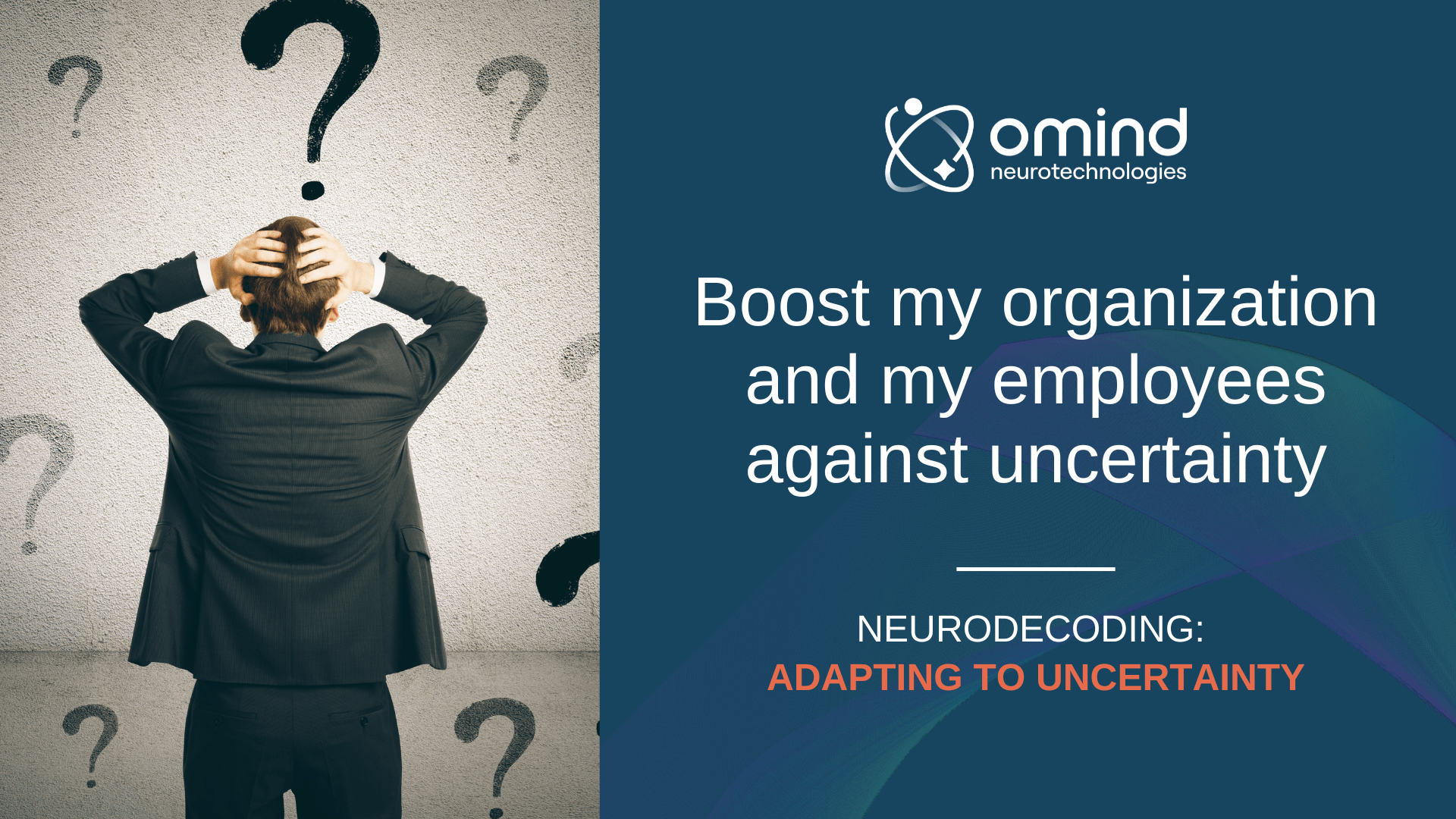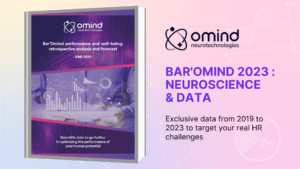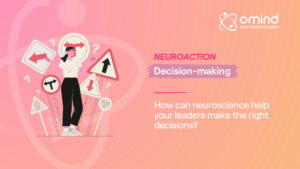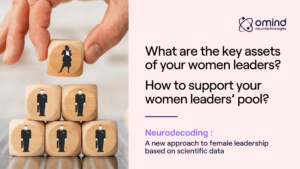We live in a complex world where uncertainty has become the norm. Health crises, new ways of working, economic instability… we are constantly faced with complex and changing situations.
What about our ADAPTABILITY, that ability to accept the possibility that something unexpected, even negative, may happen? In reality, our brains struggle to keep up. Uncertainty clashes with the way our cognition works, impacting on our performance and well-being at work.
Thankfully, NEUROSCIENCES are here to help! We have analyzed the data from our customer experiences in virtual reality or via serious games, to determine the dimensions strongly impacted by uncertainty, and develop a more virtuous relationship to uncertainty within the company.
DOWNLOAD THE INFOGRAPHIC ON THE ADAPTATION
TO UNCERTAINTY AMONG EMPLOYEES
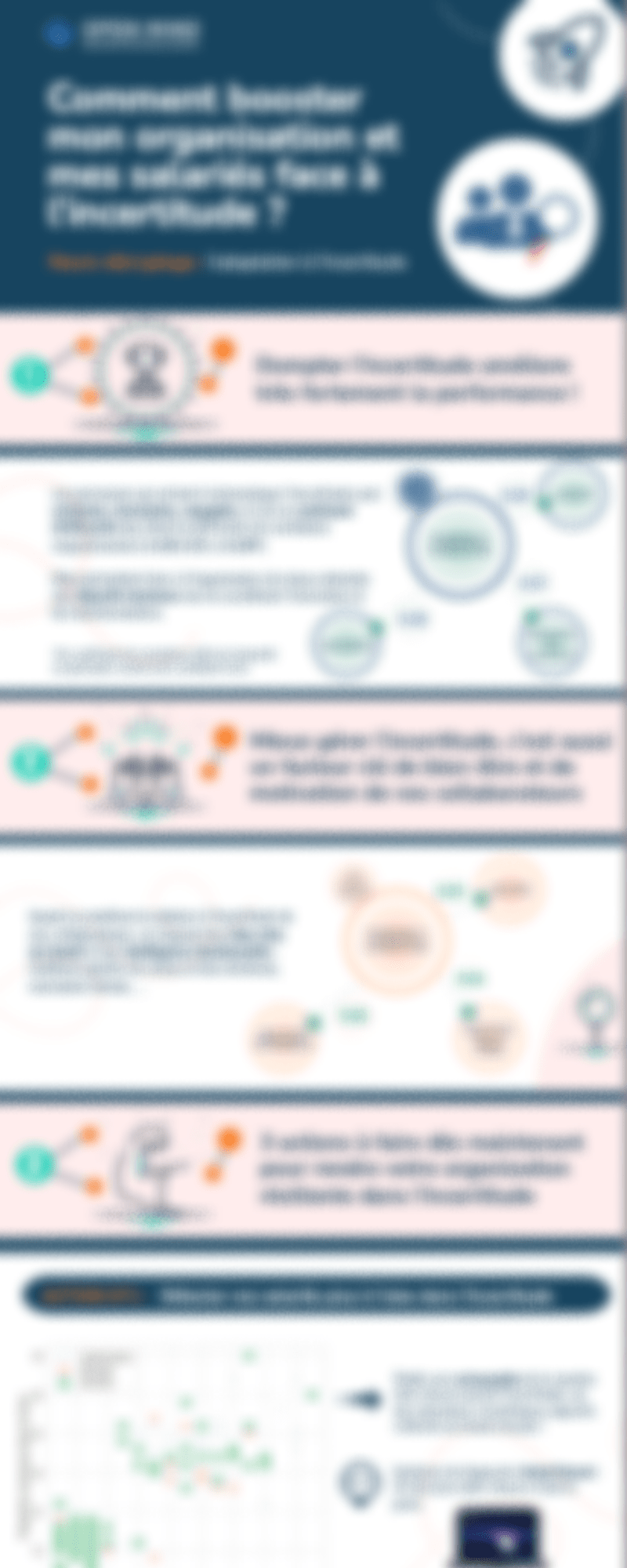
DEALING WITH UNCERTAINTY: A DRIVER FOR PERFORMANCE AND WELL-BEING AT WORK
In a world where complexity has increased by x35¹ over the last 50 years, adaptability seems more than ever a key element to consider when combining performance and well-being. Indeed, we observe that people who know how to adapt to a changing and uncertain environment have a high level of curiosity (correlation at 0,59²), strong innovation capacities (0,57²) and are highly committed to their work (0,59)². They actively contribute to the transformation of their organization, allowing it to achieve its business objectives.
A high level of adaptation to uncertainty also has a positive effect on well-being and motivation. Indeed, uncertainty-tolerant employees regulate their emotions better (0,65²), are more proactive under stress (0,54²) and feel happier (0,53²).
And yes, managing uncertainty is a fundamental concept that interacts with a wide range of human skills, involving emotional, cognitive and social competencies.
Les dernières théories en neurosciences cognitives font de la capacité du cerveau à s’adapter à l’incertitude l’une des dimensions fondamentales de son fonctionnement.
En effet, la théorie du CERVEAU PRÉDICTIF³ explique qu’anticiper les événements futurs est l’une des fonctions de base du cerveau. Nous passons une part importante (48%) de notre temps à divaguer, à générer de manière automatique des scénarios pour l’avenir. Une fois générés, certaines personnes vont accepter qu’un scénario négatif ait une petite probabilité d’arriver tandis que d’autres individus ne vont pas supporter la possibilité d’une perspective négative, même si sa probabilité est infime. C’est ce qui différencie les personnes tolérantes et intolérantes à l’incertitude. Cette dimension en impacte de nombreuses autres directement reliées à la performance et au bien-être de chacun.
ADAPTATION À L’INCERTITUDE : QUEL CONSTAT EN ENTREPRISE ?

Nos données montrent que plus on monte dans la hiérarchie, plus on trouve des personnes tolérantes à l’incertitude. En effet, la perception de l’incertitude, mesurée par la perception anxieuse du présent et la projection anxieuse dans le futur, est souvent plus mature au niveau de la direction. Mais ce n’est pas toujours le cas !
Il faut savoir détecter qui prendra naturellement un rôle de pilote et de relai dans un monde incertain.
COMMENT RENDRE VOTRE ORGANISATION RÉSILIENTE DANS L’INCERTITUDE GRÂCE AUX NEUROSCIENCES ?
3 ACTIONS CONCRÈTES À ENTREPRENDRE DÈS MAINTENANT
À découvrir dans l’infographie ⬇
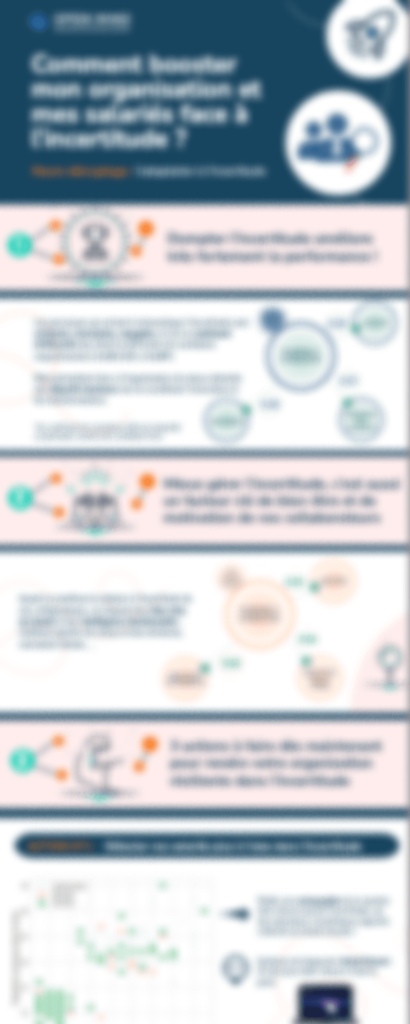
Bonus : quelques bonnes pratiques à adopter
- RÉALISER UNE TECHNIQUE DE SIMULATION MENTALE : demander à vos collaborateurs d’imaginer ce qu’ils feraient en situation de challenge. Le but : leur faire visualiser un plan selon différentes perspectives et différents contextes avec pour objectif d’améliorer leur capacité à changer pour un plan alternatif quand l’environnement l’encourage.
- IDENTIFIER LES PENSÉES “ANXIEUSES” ET AUTOMATIQUES qui leur font anticiper l’avenir comme problématique. Lorsqu’ils auront reconnu que ce n’est qu’une pensée et non quelque chose de réel, ils pourront leur donner une probabilité rationnelle de se produire dans le futur, qui sera souvent bien inférieure à leur premier a priori.
- TRAVAILLER SUR LE BIAIS DE NÉGATIVITÉ : l’être humain a une propension à porter attention aux informations négatives. Prenez-en conscience et construisez une croyance positive envers le futur en embrassant l’incertitude. L’un des meilleurs moyens de contrer le biais de négativité est de tenir un journal de gratitude⁴.
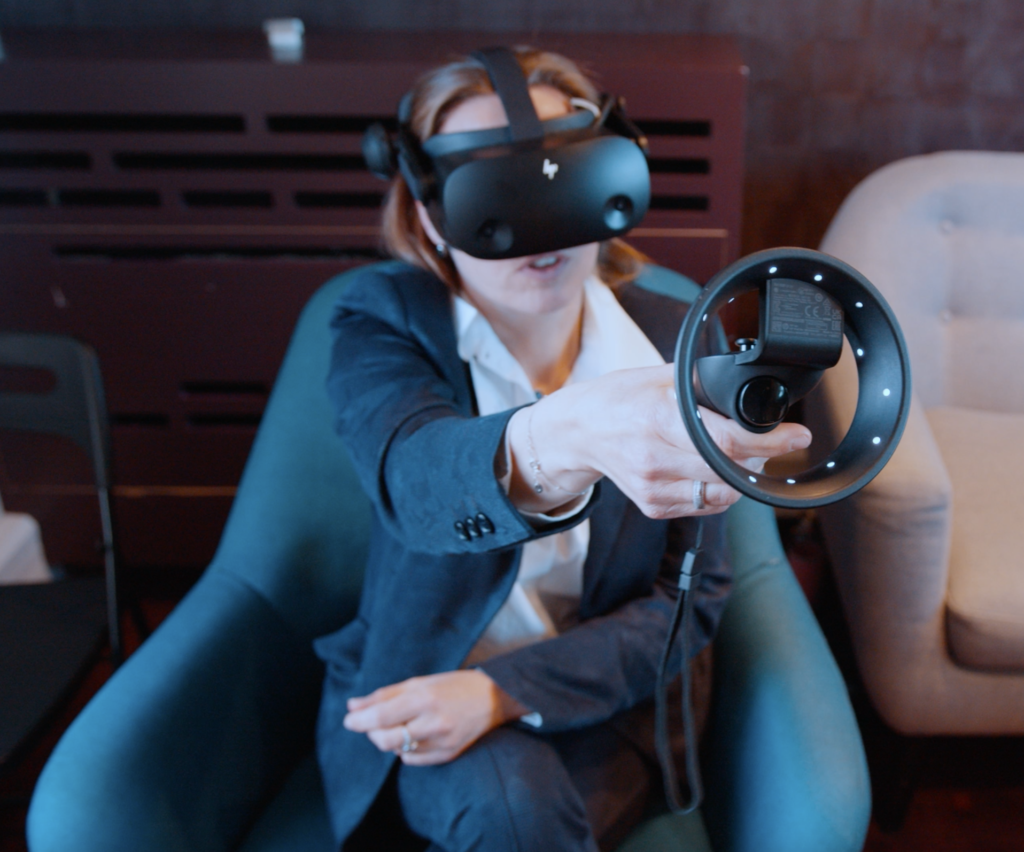
Chez Open Mind, nous développons de nouvelles expériences de formation sur les compétences humaines, à partir de neurosciences et de technologies. L’objectif ? Engager les apprenants autrement afin que ce soient eux qui prennent conscience de ce qu’ils doivent changer.
¹ Morieux, Y. (2012). Smart simplicity. Own the Future: 50 Ways to Win from the Boston Consulting Group, 335-341.
² Coefficients de corrélation entre la motivation et les autres variables du modèle. Un coefficient de corrélation de >0.5 est interprété en particulier comme une corrélation forte.
³ Friston, K. (2010). The free-energy principle: a unified brain theory?. Nature reviews neuroscience, 11(2), 127-138.
Andy Clark | Hacking the Predictive Mind
⁴ Duckworth, Steen et Seligman, (2005). Positive Psychology in Clinical Practice, Annual Review of Clinical Psychology 1(1):629-51

